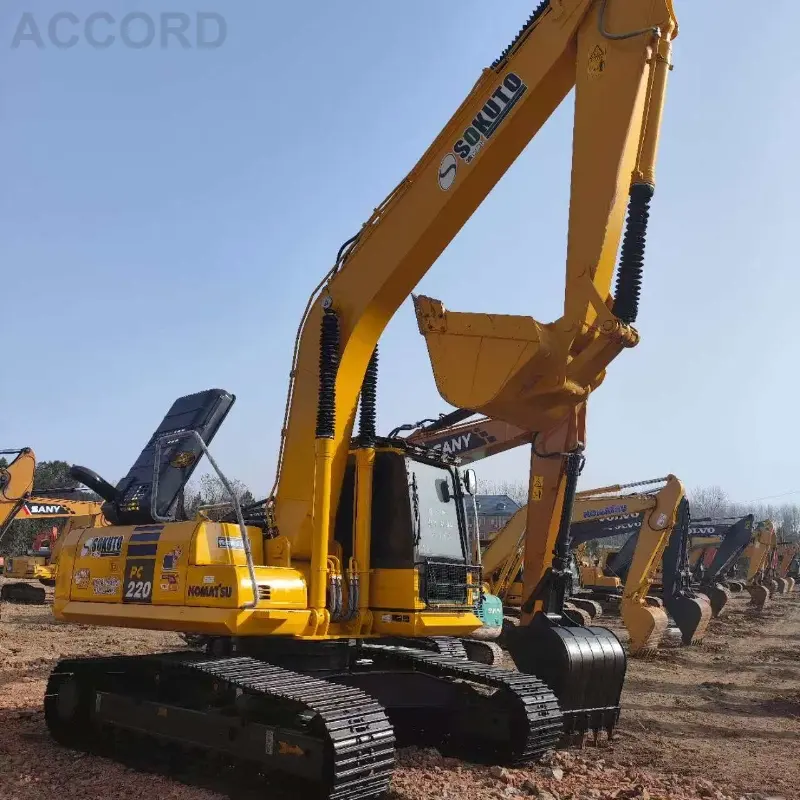Common pitfalls to avoid when buying a used Volvo excavator
Release time: 2025-05-24
When purchasing a second-hand Volvo excavator, due to the complexity of the equipment and the high investment involved, many buyers tend to overlook potential issues, leading to costly repairs or component replacements in the future. To help you avoid common pitfalls and ensure that your investment remains productive, this article summarizes some important considerations when purchasing a second-hand Volvo excavator.
1. Ignoring the Equipment’s Usage History
Pitfall: Not understanding the equipment’s usage history may result in purchasing a machine that has been subjected to heavy loads or improper operation.
How to Avoid: Ask the seller for detailed maintenance records and usage history, especially for key components like the engine, hydraulic system, and transmission. Ensure the equipment hasn’t experienced significant failures or accidents.

2. Failure to Conduct a Comprehensive Mechanical Inspection
Pitfall: A superficial exterior check may miss potential internal problems.
How to Avoid: Before purchase, it’s advisable to hire a professional mechanic or inspector to conduct a thorough inspection, covering the engine, hydraulic system, tracks, bucket, and other critical parts to ensure the equipment is in proper working condition.
3. Ignoring Market Value and Price Trends
Pitfall: Not researching the market value of similar equipment, resulting in overpaying.
How to Avoid: Compare prices of similar second-hand Volvo excavators across different channels, and familiarize yourself with the market price for machines of the same year, model, and operating hours. This helps you avoid paying too much.
4. Overlooking the Equipment’s Remaining Lifespan
Pitfall: The equipment may be nearing the end of its useful life and may require costly parts replacement or may be subject to early decommissioning.
How to Avoid: Pay attention to the machine’s operating hours, annual usage frequency, and the wear and tear of key components. If possible, check if the equipment still has manufacturer warranty or extended service options.
5. Neglecting Oil and Lubrication System Checks
Pitfall: The oil and lubrication systems may have issues, leading to unstable performance or premature damage.
How to Avoid: Check the engine oil, hydraulic fluid, and gear oils for quality, and look for signs of contamination or deterioration. Ensure the lubrication system is functioning properly.
6. Ignoring Environmental Standards Compliance
Pitfall: The equipment may not comply with local environmental emissions standards, leading to legal risks or additional modification costs.
How to Avoid: Confirm that the equipment meets local emission regulations, especially for diesel engines.
7. Lack of After-Sales Service and Spare Parts Availability
Pitfall: Some second-hand equipment may not have access to necessary spare parts or manufacturer support.
How to Avoid: Ensure that spare parts for the equipment model are readily available in the local market and that Volvo provides adequate after-sales support. If the machine is an older model, there may be a risk of parts scarcity.
8. Failure to Test the Equipment’s Operational Performance
Pitfall: Relying solely on the seller’s description without personally operating the machine or conducting a test run may cause you to overlook operational issues.
How to Avoid: Test drive the equipment yourself, checking its smoothness of operation, stability, noise levels, and response to controls. Make sure it meets your operational needs.
9. Overlooking Corrosion or Damage to the Exterior and Interior
Pitfall: The equipment may have unnoticed corrosion or damage that could affect its long-term use.
How to Avoid: Inspect the used construction equipment’s exterior, especially the hydraulic hoses, frame, bucket, and tracks, for visible signs of corrosion, cracks, or deformation. This can help avoid potential safety risks.
10. Lack of a Clear Purchase Contract and Warranty Commitment
Pitfall: Not having a formal contract or warranty agreement, making it difficult to seek recourse if issues arise post-purchase.
How to Avoid: Ensure a formal contract is signed with the seller, clearly outlining the terms of purchase, price, payment method, and warranty or after-sales services.
Purchasing a used Volvo excavator is a significant investment, and ensuring the equipment’s performance and long-term stability is crucial. By understanding the equipment’s usage history, conducting comprehensive inspections, verifying market prices, and confirming after-sales support, you can significantly reduce risks and increase the likelihood of a successful purchase. We hope the tips and suggestions provided in this article help you make a more informed and careful decision, ensuring that you acquire the right equipment for your needs and that your investment is sound.


